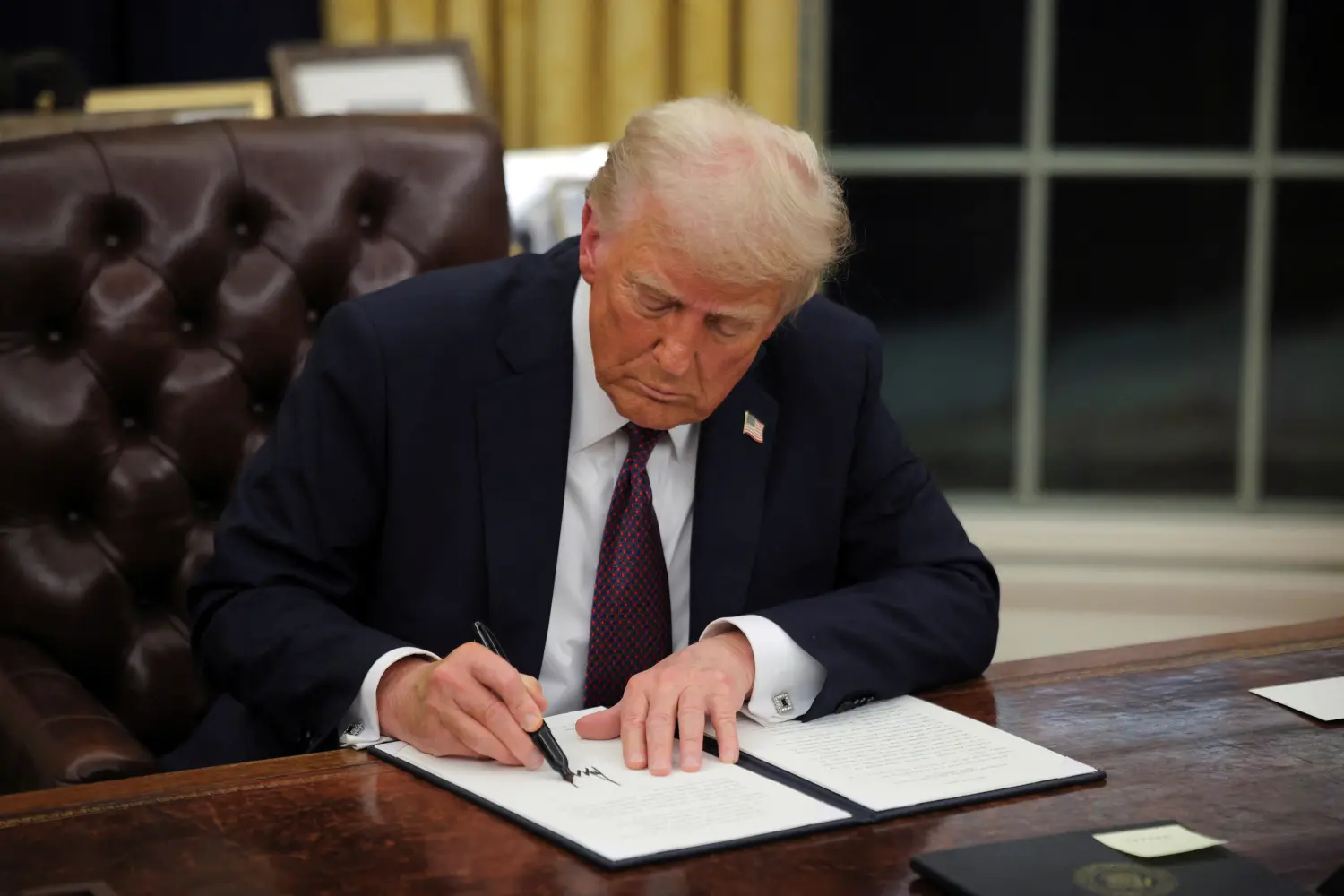Trump’s ‘Big, Beautiful Bill’ Approved: What It Means for Crypto Markets
04.07.2025 7:00 3 min. read Kosta Gushterov
Congress has officially passed President Donald Trump’s landmark economic package, a sweeping bill that combines aggressive tax cuts with deep federal spending reductions.
Dubbed by Trump as his “big, beautiful bill,” the legislation marks the first major legislative victory of his second term.
The House vote, which came after intense negotiations and a record-breaking speech by House Minority Leader Hakeem Jeffries, paves the way for the president to sign the bill into law on July 4 at a special White House ceremony.
Massive Fiscal Shift: Trillions in Cuts and New Debt
The bill is set to slash federal taxes by $4.5 trillion over the next decade. Among the headline measures are the extension of the 2017 Tax Cuts and Jobs Act, as well as new deductions — including zero taxes on tips up to $25,000 and tax-free overtime pay up to $12,500. These changes are designed to boost disposable income for millions of Americans and businesses.
But the other side of the coin is a projected increase in national debt. The legislation could add between $3.3 trillion and $5 trillion to U.S. debt over ten years, sharply raising the debt-to-GDP ratio. This could place downward pressure on the U.S. dollar and spark inflation — macroeconomic conditions that often drive demand for Bitcoin and other cryptocurrencies as alternative stores of value.
Bitcoin’s narrative as “digital gold” typically gains strength in inflationary periods, when investors seek scarce, decentralized assets to hedge against fiat currency devaluation.
Crypto Tailwinds: Disposable Income and Inflation Risks
The combination of rising disposable income and mounting inflation risks creates a potentially bullish environment for cryptocurrencies.
More disposable income may fuel retail investment in crypto markets, while structural inflation concerns could accelerate Bitcoin’s role as a hedge. Additionally, the bill’s alignment with pro-growth, low-tax economic policies could lead to looser financial conditions that historically favor risk assets, including digital currencies.
Political Divide and Long-Term Impact
The bill passed along sharp partisan lines, with House Minority Leader Hakeem Jeffries fiercely opposing it during what became the longest House floor speech in modern history.
The legislation’s deep cuts to federal safety net programs may stoke political tensions, but from a market perspective, it represents a clear expansion of fiscal stimulus and an increase in sovereign debt — two factors that crypto investors traditionally view as favorable for Bitcoin.
Looking Ahead
President Trump is scheduled to sign the bill into law on July 4 at 5 p.m. ET, turning it into the centerpiece of his second-term domestic agenda.
As Washington celebrates the legislative win, crypto traders will be watching closely. With new inflationary catalysts, expanded tax breaks, and a surge in U.S. debt on the horizon, the stage may be set for Bitcoin and the broader crypto market to capture fresh momentum in the months ahead.
-
1
Binance Could Introduce Golden Visa Option for BNB Investors Inspired by TON
07.07.2025 8:00 1 min. read -
2
Weekly Recap: Key Shifts and Milestones Across the Crypto Ecosystem
06.07.2025 17:00 4 min. read -
3
Trump Imposes 50% Tariff on Brazil: Political Tensions and Censorship at the Center
10.07.2025 7:00 2 min. read -
4
USA Imposes Tariffs on Multiple Countries: How the Crypto Market Could React
08.07.2025 8:30 2 min. read -
5
Key Crypto Events to Watch in the Next Months
20.07.2025 22:00 2 min. read
Bitwise CIO: The Four-Year Crypto Cycle is Breaking Down
The classic four-year crypto market cycle—long driven by Bitcoin halvings and boom-bust investor behavior—is losing relevance, according to Bitwise CIO Matt Hougan.
Strategy to Raise Another $2.47 Billion for Bitcoin Acquisition
Strategy the company formerly known as MicroStrategy, has announced the pricing of a new $2.47 billion capital raise through its initial public offering of Variable Rate Series A Perpetual Stretch Preferred Stock (STRC).
AI Becomes Gen Z’s Secret Weapon for Crypto Trading
A new report from MEXC reveals a striking generational shift in crypto trading behavior: Gen Z traders are rapidly embracing AI tools as core components of their strategy.
3 key Reasons Behind Today’s Crypto Market Drop
The crypto market shed 1.02% in the past 24 hours, led by a sharp Bitcoin drop and fading altcoin interest.
-
1
Binance Could Introduce Golden Visa Option for BNB Investors Inspired by TON
07.07.2025 8:00 1 min. read -
2
Weekly Recap: Key Shifts and Milestones Across the Crypto Ecosystem
06.07.2025 17:00 4 min. read -
3
Trump Imposes 50% Tariff on Brazil: Political Tensions and Censorship at the Center
10.07.2025 7:00 2 min. read -
4
USA Imposes Tariffs on Multiple Countries: How the Crypto Market Could React
08.07.2025 8:30 2 min. read -
5
Key Crypto Events to Watch in the Next Months
20.07.2025 22:00 2 min. read


